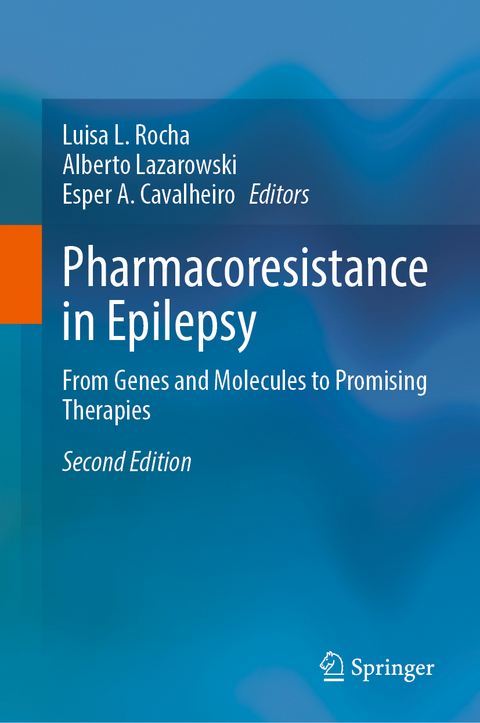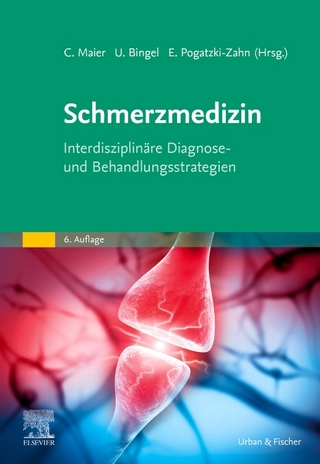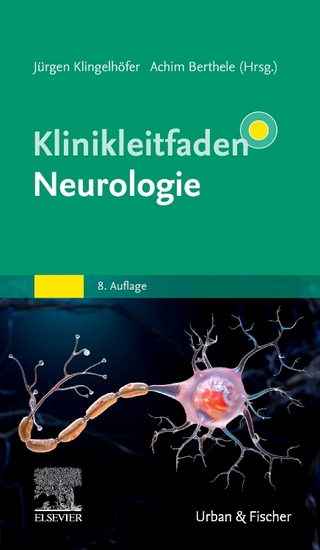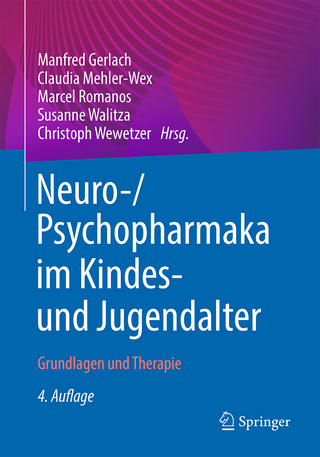
Pharmacoresistance in Epilepsy
Springer International Publishing (Verlag)
978-3-031-36525-6 (ISBN)
This new edition of Pharmacoresistance in Epilepsy addresses all issues relating to drug-resistance in epilepsy, including studies in patients as well in experimental models and presents the basis for an understanding of recent developments in the pathogenesis and treatment of this condition. Important issues associated with drug-resistant epilepsy are reviewed and updated, such as abnormalities in inhibitory mechanisms, neurotoxicity and changes the immune system associated with this disorder, and the development of drug-resistance as consequence of chronic exposure to antiseizure-medications. Considering that a major obstacle is that epilepsy associated with drug-resistance cannot be controlled with the traditional antiseizure medications, specific chapters describe therapeutic strategies to prevent or reduce the progression of the disease with complementary medical therapies, such as transcranial focal stimulation to promote neuroprotection. Pharmacoresistance in Epilepsy is a valuable resource for anyone working in the field, whether studying epilepsy in the lab or treating it in an office.
lt;p>Luisa Rocha is Professor in the Department of Pharmacobiology of the Center for Research and Advanced Studies in Mexico City, Mexico.
Esper Cavalheiro is Professor Emeritus at the Universidade Federal de Sao Paulo/Escola Paulista de Medicina, Brasil.
Alberto Lazarowski is Full Professor at Universidad de Buenos Aires, Argentina.
Chapter 1: Why study Drug Resistant Epilepsy?.- Chapter 2: Pharmacoresistance in Epilepsy.- Chapter 3: Experimental models for the study of drug-resistant epilepsy.- Chapter 4: On Complexity and Emergence: Linking the Hypotheses of Pharmacoresistance in Epilepsy.- Chapter 5: Role of High-Frequency Oscillation Networks in Managing Pharmacoresistant Epilepsy.- Chapter 6: Transporter hypothesis in pharmacoresistant epilepsies. Is it at the central or peripheral level?.- Chapter 7: Changes in Targets as an Explanation for Drug Resistance in Epilepsy.- Chapter 8: Cellular and molecular mechanisms of neuroinflammation in drug-resistant epilepsy.- Chapter 9: Contribution of the antiepileptic drug administration regime to avoid the development and/or establishment of pharmacoresistant epilepsy.- Chapter 10: Pharmacogenetics in Epilepsy and Refractory Epilepsy.- Chapter 11: Seizures Induce Hypoxia or Hypoxia Induces Seizures. A Perverse Relationship that Increases the Risk of SUDEP.- Chapter 12: Neonatal excitotoxicity triggers degenerative processes related to seizure susceptibility and pharmacoresistance.- Chapter 13: Cerebrovascular remodeling and the role of vascular endothelial growth factor in the epileptic brain and pharmacoresistance.- Chapter 14: The Role of JNK3 in Epilepsy and Neurodegeneration.- Chapter 15: Application of proteomics in the study of molecular markers in epilepsy.- Chapter 16: GABAergic neurotransmission abnormalities in pharmacoresistant epilepsy: experimental and human studies.- Chapter 17: Genes involved in pharmacoresistant epilepsy.- Chapter 18: Drug-resistant Epilepsy and the Influence of Age, Gender and Comorbid Disorders.- Chapter 19: Indications for Intracerebral Recording in Candidates for Epilepsy Surgery.- Chapter 20: On the Development of New Drugs for the Treatment of Drug Resistant Epilepsy: An Update on Different Approaches to Different Hypotheses.- Chapter 21: Physical exercise as a strategy to reduce seizure susceptibility.- Chapter 22: Ketogenic Diet and Drug-resistant Epilepsy.- Chapter 23: Modulating P-glycoprotein Regulation as a Therapeutic Strategy for Pharmacoresistant Epilepsy.- Chapter 24: Vagus Nerve Stimulation for Intractable Seizures.- Chapter 25: Non Invasive Brain Stimulation as a potential Therapeutic Procedure in drug-resistant epilepsy.- Chapter 26: Effects of transcranial focal electrical stimulation via concentric ring electrodes on seizure activity.
| Erscheinungsdatum | 31.08.2023 |
|---|---|
| Zusatzinfo | XV, 596 p. 84 illus., 79 illus. in color. |
| Verlagsort | Cham |
| Sprache | englisch |
| Maße | 155 x 235 mm |
| Gewicht | 1075 g |
| Themenwelt | Medizin / Pharmazie ► Medizinische Fachgebiete ► Neurologie |
| Medizin / Pharmazie ► Medizinische Fachgebiete ► Pharmakologie / Pharmakotherapie | |
| Medizin / Pharmazie ► Studium | |
| Naturwissenschaften ► Biologie ► Humanbiologie | |
| Schlagworte | antiepileptic drugs • drug therapy • Epilepsy • neurotoxicity • Pharmacodynamics • pharmacoresistance • Seizures |
| ISBN-10 | 3-031-36525-9 / 3031365259 |
| ISBN-13 | 978-3-031-36525-6 / 9783031365256 |
| Zustand | Neuware |
| Informationen gemäß Produktsicherheitsverordnung (GPSR) | |
| Haben Sie eine Frage zum Produkt? |
aus dem Bereich


